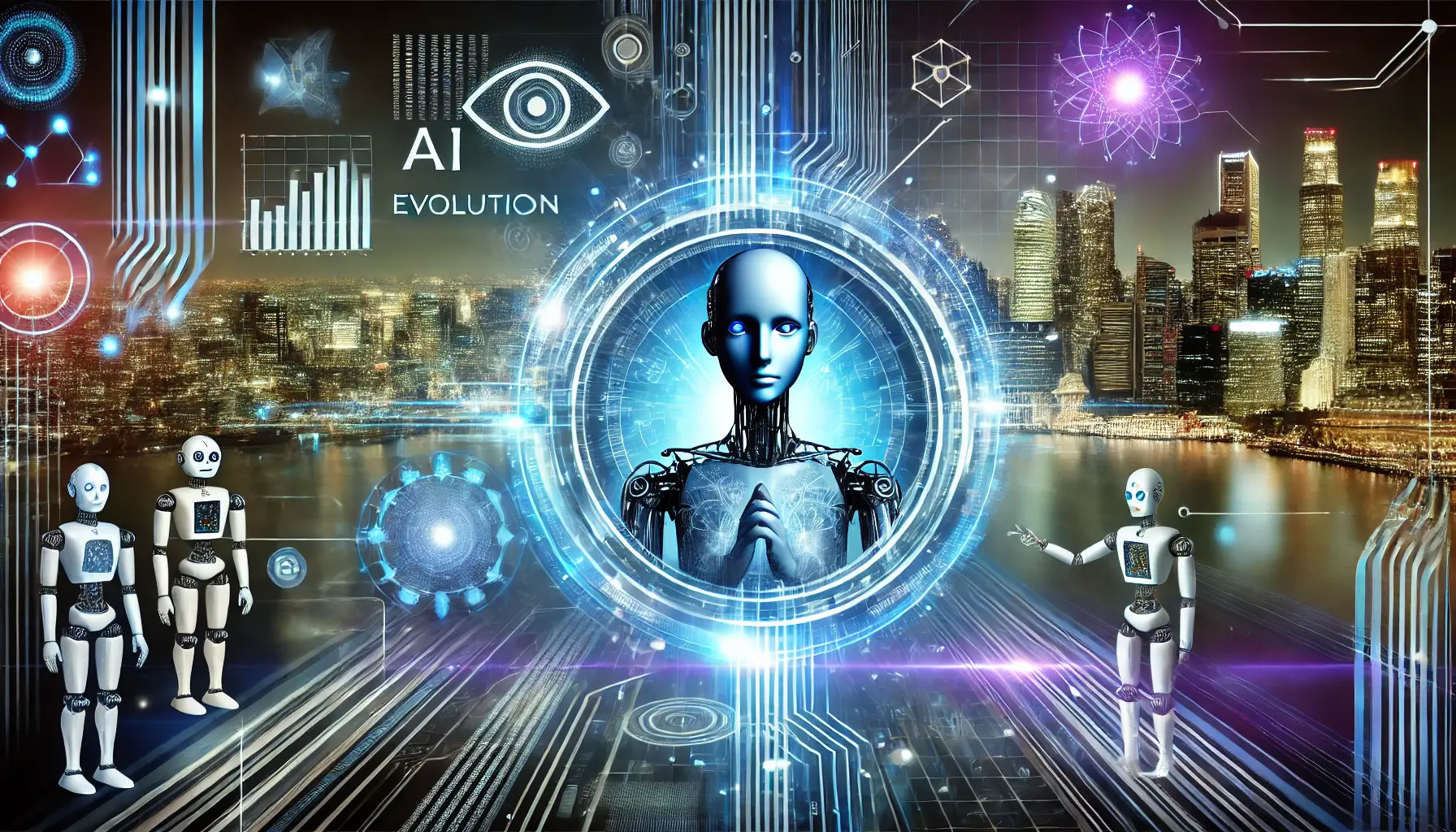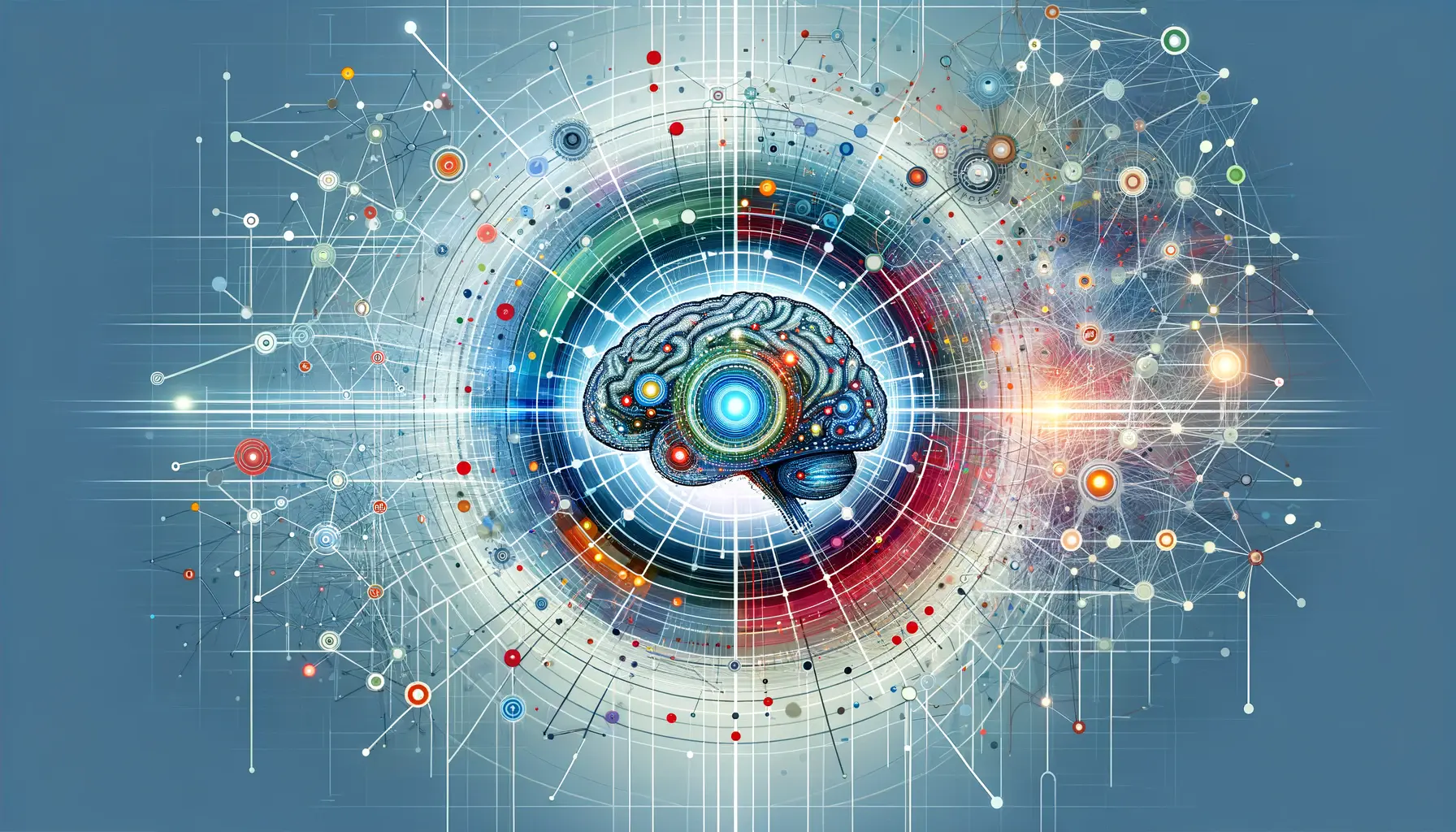The intersection of artificial intelligence (AI) and environmental sustainability has become a focal point of contemporary discourse, particularly as technologies like OpenAI’s Sora push the boundaries of what’s possible.
The development and deployment of AI systems are not without environmental costs, yet they also offer unprecedented opportunities for advancing sustainability.
This duality forms the core of our exploration into Sora’s sustainability, a subject that encapsulates the broader implications of AI on our planet’s ecological balance.
As we delve into the environmental impact of AI, particularly through the lens of OpenAI’s Sora, it’s crucial to understand the complexity of this relationship.
AI’s potential to drive efficiency and innovation in renewable energy, conservation, and resource management is immense.
However, the environmental footprint of training and running sophisticated AI models like Sora cannot be overlooked.
Balancing these aspects is essential for harnessing AI’s power for a sustainable future.
- The Environmental Footprint of AI Development
- AI’s Role in Renewable Energy and Conservation
- Reducing AI’s Carbon Footprint
- AI in Environmental Monitoring and Management
- Challenges and Ethical Considerations in AI for Sustainability
- Future Directions in AI for Environmental Sustainability
- Empowering Sustainable Development with AI
- Envisioning a Sustainable Future with AI
- Sora’s Sustainability and AI’s Environmental Impact FAQs
The Environmental Footprint of AI Development
Energy Consumption in AI Training
The process of training AI models, especially those as advanced as Sora, requires significant computational resources.
These resources, in turn, consume vast amounts of electricity, often sourced from non-renewable energy.
The carbon footprint associated with training large AI models has raised concerns among environmentalists and technologists alike.
Efforts to quantify and reduce this footprint are ongoing, with strategies ranging from optimizing algorithms to utilizing greener energy sources.
Recent advancements in AI efficiency and the adoption of more sustainable practices have shown promise in mitigating these environmental impacts.
However, the balance between innovation and sustainability remains a challenging frontier.
The development of Sora by OpenAI exemplifies this challenge, pushing the envelope in AI capabilities while also spotlighting the need for sustainable development practices.
Optimizing AI for Sustainability
In response to the environmental concerns posed by AI development, there has been a concerted effort to optimize AI models for greater efficiency.
Techniques such as pruning, quantization, and knowledge distillation are employed to reduce the computational load of AI models without compromising their performance.
These optimizations not only lessen the environmental impact but also make AI more accessible by reducing the required computational resources.
Moreover, AI itself is being leveraged to tackle environmental issues.
From smart grids that optimize energy use to algorithms that predict and mitigate environmental disasters, AI’s role in promoting sustainability is multifaceted.
Sora’s development reflects this dual role of AI, embodying both the challenges and solutions in the quest for environmental sustainability.
The development and optimization of AI models like Sora highlight the complex relationship between technological advancement and environmental sustainability. Balancing these aspects is crucial for leveraging AI’s potential benefits while minimizing its ecological footprint.
AI’s Role in Renewable Energy and Conservation
The integration of AI technologies like Sora into the renewable energy sector and conservation efforts represents a beacon of hope for environmental sustainability.
By harnessing the power of AI, we can significantly enhance the efficiency and effectiveness of renewable energy systems and conservation strategies.
This section explores how AI is revolutionizing these areas, offering insights into a more sustainable future.
Enhancing Renewable Energy Efficiency
AI’s application in renewable energy systems, such as solar and wind power, is transforming the landscape of energy production and distribution.
By analyzing vast datasets, AI can predict energy demand and supply fluctuations, enabling smarter grid management and storage solutions.
This predictive capability not only ensures a more stable energy supply but also maximizes the use of renewable resources, reducing reliance on fossil fuels.
- Optimization of energy production: AI algorithms can forecast weather conditions, optimizing the operation of solar panels and wind turbines to maximize energy capture.
- Smart grid management: AI enhances grid stability by predicting demand patterns and integrating energy from diverse sources, improving the efficiency of electricity distribution.
- Battery storage optimization: Through AI, the management of energy storage systems becomes more efficient, ensuring that excess energy produced by renewables is stored and used effectively.
Advancing Conservation Efforts with AI
Conservation efforts are also benefiting from AI’s capabilities.
By processing and analyzing environmental data at a scale and speed unattainable by humans, AI models are identifying patterns and trends that inform conservation strategies.
From tracking wildlife populations to monitoring deforestation, AI is a powerful tool in the fight against environmental degradation.
- Wildlife monitoring and protection: AI-driven image recognition technologies are being used to track endangered species, monitor their populations, and combat poaching.
- Forest conservation: AI algorithms analyze satellite imagery to detect illegal logging and deforestation, enabling quicker responses to these activities.
- Water conservation: AI helps in predicting water usage patterns and identifying leaks in infrastructure, promoting more efficient water management.
The synergy between AI and renewable energy and conservation efforts underscores the potential of technology to foster a sustainable future. By optimizing energy systems and enhancing conservation strategies, AI is paving the way for a more environmentally friendly and resource-efficient world.
Reducing AI’s Carbon Footprint
The environmental impact of AI extends beyond its utility, encompassing the carbon footprint generated by the energy-intensive processes required to train and operate AI models.
Recognizing this, the tech industry has initiated various efforts to mitigate these impacts, focusing on making AI more energy-efficient and less carbon-intensive.
This part delves into the strategies and innovations aimed at reducing AI’s carbon footprint, highlighting the progress and challenges in achieving a greener AI.
One of the primary strategies involves optimizing AI algorithms to be more energy-efficient.
This includes refining the architecture of neural networks to reduce the computational power needed without sacrificing performance.
Additionally, there’s a growing emphasis on using renewable energy sources to power data centers, directly addressing the carbon footprint associated with AI’s energy consumption.
Energy-Efficient AI Algorithms
- Algorithm optimization: Developers are creating more efficient AI models that require less computational power, thereby reducing energy consumption.
- Use of specialized hardware: The development and deployment of AI-specific chips that are more energy-efficient than general-purpose processors.
Renewable Energy for Data Centers
- Transition to green energy: Many tech companies are committing to powering their data centers with renewable energy, significantly reducing their carbon emissions.
- Carbon offsetting initiatives: Investments in environmental projects that compensate for the carbon footprint generated by AI operations.
Moreover, the AI field is exploring novel cooling technologies to reduce the energy used in cooling data centers, which is a significant portion of their overall energy consumption.
Innovations such as using natural cooling sources and developing more efficient cooling systems are part of this effort.
Advancements in Cooling Technologies
- Natural cooling solutions: Utilizing geographic locations where natural cooling is available, reducing the need for artificial cooling.
- Efficient cooling systems: Developing advanced cooling technologies that use less energy to maintain optimal operating temperatures for servers.
While these efforts represent significant steps towards minimizing AI’s environmental impact, the challenge of achieving a fully sustainable AI ecosystem remains. Continuous innovation and commitment across the industry are essential for realizing the goal of a carbon-neutral AI.
AI in Environmental Monitoring and Management
The application of AI in environmental monitoring and management is revolutionizing how we understand and interact with our planet’s ecosystems.
By leveraging AI’s data processing and analytical capabilities, scientists and researchers can gain deeper insights into environmental trends, enabling more informed decision-making and proactive management strategies.
This section explores the transformative impact of AI on environmental monitoring and management, highlighting key areas where AI is making a difference.
AI technologies are being deployed across various environmental domains, from oceanography to atmospheric science, providing critical data that inform conservation efforts and policy decisions.
These AI-driven systems can process vast amounts of data from satellites, sensors, and other sources, identifying patterns and anomalies that might indicate environmental changes or risks.
Climate Change Analysis
- AI models analyze climate data to predict changes in weather patterns, sea levels, and temperature fluctuations, offering valuable insights for climate change mitigation strategies.
- Through the analysis of satellite imagery and environmental sensors, AI helps in monitoring greenhouse gas emissions and their sources, facilitating targeted reduction efforts.
Biodiversity and Ecosystem Health
- AI-driven tools assess biodiversity by analyzing data from remote sensing and ground observations, helping to identify areas of conservation priority and monitor ecosystem health.
- Machine learning algorithms are used to predict the impact of environmental changes on species distribution and ecosystem dynamics, guiding conservation and restoration efforts.
Furthermore, AI is instrumental in managing natural resources more efficiently.
By predicting demand and optimizing resource allocation, AI contributes to sustainable management practices that reduce waste and ensure the long-term viability of critical resources.
Natural Resource Management
- Water management: AI models predict water demand and supply, optimizing distribution and conservation efforts to ensure sustainable water use.
- Forest management: AI supports sustainable forestry practices by monitoring forest health, predicting fire risks, and optimizing logging to minimize environmental impact.
The integration of AI into environmental monitoring and management not only enhances our ability to understand and protect the natural world but also empowers us to make more sustainable choices for the future. By providing actionable insights and enabling efficient resource management, AI is a pivotal tool in the global effort to address environmental challenges.
Challenges and Ethical Considerations in AI for Sustainability
While the potential of AI to contribute to sustainability goals is immense, it’s accompanied by a set of challenges and ethical considerations that must be addressed.
The deployment of AI in environmental contexts raises questions about data privacy, algorithmic bias, and the long-term implications of relying on automated systems for critical decision-making.
This part examines the hurdles and ethical dilemmas faced in harnessing AI for sustainability, underscoring the need for responsible innovation.
One of the primary concerns is the accuracy and bias in AI algorithms.
Given that AI systems learn from historical data, there’s a risk of perpetuating existing biases or inaccuracies, especially in environmental applications where data may be incomplete or skewed.
Ensuring the fairness and reliability of AI models is crucial for their effective use in sustainability efforts.
Data Privacy and Security
- The collection and analysis of environmental data through AI often involve sensitive information, necessitating robust data privacy and security measures to protect against misuse.
- Implementing transparent data handling practices and ensuring compliance with global data protection regulations are essential steps in maintaining public trust in AI applications for sustainability.
Algorithmic Bias and Fairness
- Addressing algorithmic bias is critical to prevent skewed outcomes in environmental monitoring and management, ensuring that AI-driven initiatives benefit all communities equitably.
- Developing diverse training datasets and employing fairness-aware algorithms can help mitigate bias, promoting more inclusive and accurate AI solutions for sustainability.
Moreover, the reliance on AI for environmental decision-making introduces ethical considerations regarding the autonomy of AI systems and their role in shaping policy and conservation strategies.
Balancing human oversight with AI’s capabilities is essential to ensure that ethical and societal values guide sustainability efforts.
Ensuring Human Oversight
- Maintaining a balance between AI autonomy and human oversight is crucial to ensure that AI-driven decisions align with ethical standards and societal values.
- Incorporating interdisciplinary expertise in the development and deployment of AI for sustainability can enhance decision-making processes, ensuring they are informed, ethical, and effective.
Neglecting the ethical dimensions and potential biases of AI in sustainability initiatives can undermine their effectiveness and fairness, highlighting the importance of ethical AI development and deployment practices.
Future Directions in AI for Environmental Sustainability
The journey of integrating AI into environmental sustainability efforts is ongoing, with future directions promising even greater impact and innovation.
As technology evolves, so too do the opportunities for AI to contribute to a more sustainable and resilient planet.
This part explores the emerging trends and potential advancements in AI that could further enhance its role in environmental sustainability, from novel applications to breakthroughs in AI efficiency and effectiveness.
Advancements in AI technologies are expected to provide deeper insights into environmental processes, improve the efficiency of renewable energy systems, and enhance the precision of conservation strategies.
The future of AI in sustainability hinges on breakthroughs that reduce the environmental footprint of AI itself, alongside innovations that leverage AI for environmental monitoring, management, and protection.
Next-Generation AI Models
- Development of more efficient, less resource-intensive AI models that maintain high performance while reducing the environmental impact of training and operation.
- Exploration of new AI architectures that can process environmental data more effectively, enabling real-time monitoring and management of ecosystems.
AI-Driven Climate Solutions
- AI’s role in climate change mitigation is set to expand, with models that can more accurately predict extreme weather events, assess carbon capture strategies, and optimize renewable energy production.
- Innovations in AI could lead to more effective strategies for reducing greenhouse gas emissions and adapting to climate change impacts.
Moreover, the integration of AI with other emerging technologies, such as blockchain for secure data management and Internet of Things (IoT) devices for comprehensive environmental sensing, is expected to enhance the scope and effectiveness of sustainability initiatives.
These integrations promise a more interconnected and automated approach to environmental management, where AI plays a central role in orchestrating complex systems for sustainability.
Interdisciplinary Collaboration
- The future of AI in sustainability will increasingly rely on interdisciplinary collaboration, combining insights from environmental science, computer science, ethics, and policy to develop holistic AI solutions.
- Such collaborations can ensure that AI technologies are developed and deployed in ways that are not only technologically advanced but also socially responsible and environmentally beneficial.
As we look to the future, the potential of AI to drive environmental sustainability is both vast and inspiring. By continuing to innovate responsibly and collaboratively, we can harness AI’s power to address some of the most pressing environmental challenges of our time, paving the way for a sustainable and prosperous future for all.
Empowering Sustainable Development with AI
The role of AI in empowering sustainable development extends beyond environmental conservation, touching on economic and social dimensions as well.
Sustainable development seeks to balance the needs of the present with the future, ensuring that we leave a livable world for generations to come.
AI’s capabilities can be harnessed to drive progress across all three pillars of sustainability: environmental, economic, and social.
This final part explores how AI is contributing to sustainable development goals (SDGs) and the broader implications for society.
AI’s impact on sustainable development is multifaceted, offering tools to combat climate change, enhance resource efficiency, and promote social equity.
By analyzing data on a scale and at a speed that humans cannot match, AI provides insights that inform policy, drive innovation, and foster a more sustainable and equitable world.
AI for Economic Sustainability
- AI enhances economic sustainability by optimizing production processes, reducing waste, and improving resource management, leading to more efficient and sustainable business practices.
- Through predictive analytics and automation, AI contributes to job creation and skills development in the green economy, supporting sustainable economic growth.
AI for Social Sustainability
- AI technologies play a crucial role in addressing social challenges, from improving access to education and healthcare to enhancing disaster response and humanitarian aid.
- By leveraging AI for social good, we can make strides towards reducing inequality and ensuring that the benefits of technological advancements are shared across society.
As AI continues to evolve, its integration into sustainable development strategies becomes increasingly critical.
The challenge lies in ensuring that AI development is guided by ethical considerations, inclusivity, and a commitment to the public good.
By prioritizing these values, we can leverage AI not just as a tool for economic growth, but as a catalyst for comprehensive sustainable development.
Strengthening AI Governance for Sustainability
- Effective governance frameworks are essential to ensure that AI technologies are developed and deployed in ways that support sustainable development goals, addressing potential risks and ethical concerns.
- Collaboration between governments, the private sector, and civil society is key to creating policies that encourage the responsible use of AI for the benefit of all.
AI’s potential to empower sustainable development across environmental, economic, and social domains underscores its significance as a transformative technology. By embracing AI with a focus on sustainability, we can unlock innovative solutions to global challenges, paving the way for a more sustainable, equitable, and prosperous future.
Envisioning a Sustainable Future with AI
The journey through the realms of AI’s environmental impact, particularly through the lens of OpenAI’s Sora, reveals a complex yet hopeful narrative.
As we’ve explored the multifaceted roles of AI in driving sustainability, it’s clear that the technology harbors both challenges and immense potential.
The balance between leveraging AI for its unparalleled capabilities and mitigating its environmental footprint is delicate, requiring concerted efforts across sectors.
This conclusion aims to weave together the insights gained, highlighting the path forward in our quest for sustainability.
AI as a Catalyst for Environmental Stewardship
AI’s role in environmental sustainability is undeniable.
From optimizing renewable energy sources to enhancing conservation efforts, AI has demonstrated its capacity to address some of the most pressing environmental challenges.
The development of energy-efficient AI models and the use of AI in environmental monitoring underscore the technology’s potential to contribute positively to our ecological well-being.
However, the sustainability of AI itself remains a pertinent issue, with ongoing efforts to reduce its carbon footprint and ensure its operations are powered by renewable energy sources.
Overcoming Challenges Through Innovation and Ethics
The path to harnessing AI for sustainability is fraught with challenges, including ethical considerations, data privacy concerns, and the need for human oversight.
Addressing these challenges is crucial for ensuring that AI contributes to sustainable development in a manner that is equitable and just.
Innovations in AI must be guided by ethical principles, with a focus on reducing bias, ensuring transparency, and promoting inclusivity.
Moreover, the governance of AI technologies must be strengthened to align with sustainability goals, ensuring that AI serves the public good.
The Road Ahead
- Continued innovation in AI efficiency and effectiveness, with a focus on developing models that are less resource-intensive and more environmentally friendly.
- Greater emphasis on interdisciplinary collaboration, bringing together experts from environmental science, computer science, ethics, and policy to create holistic AI solutions for sustainability.
- Enhanced governance frameworks to ensure that AI development and deployment are aligned with sustainable development goals and ethical standards.
In conclusion, the intersection of AI and sustainability offers a promising avenue for addressing environmental challenges and advancing sustainable development.
The journey of integrating AI into our sustainability efforts is ongoing, with the potential for significant positive impact.
By prioritizing ethical considerations, fostering innovation, and ensuring responsible governance, we can leverage AI to create a more sustainable, equitable, and prosperous future for all.
The role of AI in sustainability, exemplified by initiatives like OpenAI’s Sora, is a testament to the transformative power of technology when guided by a commitment to the well-being of our planet and its inhabitants.
Sora’s Sustainability and AI’s Environmental Impact FAQs
Explore commonly asked questions about the sustainability of AI technologies like Sora and their environmental impact.
AI technologies, including Sora, can significantly consume electricity, potentially impacting the environment depending on the energy sources used.
Sora, by optimizing AI processes, aims to reduce energy consumption and contribute to sustainability through efficient data processing.
Yes, AI models such as Sora can enhance renewable energy efficiency by predicting demand and optimizing energy distribution.
The main challenges include ensuring data accuracy, managing the high energy consumption of AI, and addressing potential biases in AI algorithms.
Not necessarily. The environmental impact depends on the source of the electricity used, with renewable energy sources mitigating this impact.
The industry is focusing on developing more energy-efficient AI models and using renewable energy to power data centers.
Yes, AI technologies have the potential to accurately predict environmental changes by analyzing large datasets and identifying patterns.
AI aids in sustainable natural resource management by optimizing usage, predicting demand, and identifying efficient conservation strategies.













